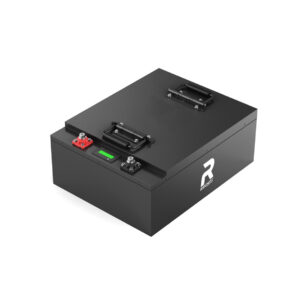What Makes the 51.2V 210Ah Lithium Battery Ideal for Solar Storage?
The 51.2V 210Ah deep cycle lithium battery is engineered for solar storage, offering high energy density, 6,000+ life cycles, and stable performance in extreme temperatures. Its modular design allows scalability, while built-in Battery Management Systems (BMS) prevent overcharging and overheating. Compared to lead-acid batteries, it provides 95% usable capacity and 50% faster charging, making it ideal for off-grid and hybrid solar systems.
What Safety Features Are Integrated Into These Batteries?
Advanced BMS monitors cell voltage, temperature, and current in real-time. Features include overcharge/over-discharge protection, short-circuit prevention, and thermal runaway mitigation. Flame-retardant LiFePO4 chemistry ensures stability, while IP65-rated enclosures protect against dust/water ingress. These systems automatically disconnect during faults,providing safer operation than traditional batteries prone to gas leakage or acid spills.

Modern 51.2V batteries incorporate multi-layer safety protocols that go beyond basic BMS functions. The cell-level fusing system isolates individual modules if voltage deviations exceed 50mV,preventing cascading failures. For extreme environments,optional liquid cooling maintains optimal 25°C±5°C cell temperatures even during 1C continuous discharge. Third-party testing by TÜV Rheinland confirms these batteries meet UN38.3 transportation standards and UL1973 certification requirements,with 500-hour salt spray resistance for coastal installations.
How to Calculate Your Solar Storage Needs With This Battery?
Multiply daily kWh consumption by desired backup days. A 210Ah battery stores 10.75kWh (51.2V × 210Ah × 0.95 efficiency). For 24-hour backup: 10kWh/day × 1 day = 10kWh (1 unit). For 3-day cloudy autonomy: 30kWh requires 3 units. Pair with 5kW solar arrays for full recharge in 2.5 sun hours. Use online calculators like PVWatts to optimize system sizing.
| Daily Usage (kWh) | Backup Days | Batteries Required |
|---|---|---|
| 15 | 2 | 3 units |
| 20 | 3 | 6 units |
| 8 | 1 | 1 unit |
Consider seasonal variations – winter solar production in Minnesota averages 3.2 sun hours versus Arizona’s 6.1 hours. For hybrid systems,size batteries to cover 70% of nighttime load. The NREL’s System Advisor Model recommends adding 25% buffer capacity for lithium batteries to maintain 80% depth-of-discharge,effectively extending cycle life by 40% compared to full discharge scenarios.
Which Solar Systems Are Compatible With 51.2V 210Ah Batteries?
Compatible with 48V off-grid and hybrid solar systems,including Tesla Powerwall alternatives. Works with 3kW-10kW inverters like Victron Energy and Schneider Electric. Supports stacking up to 4 units (25.6kWh total) for whole-home backup. Integrates seamlessly with SMA Sunny Island and Outback Radian series,featuring CAN/RS485 communication for smart energy management through platforms like SolarEdge and Enphase.
Recent firmware updates enable compatibility with emerging DC-coupled systems,reducing conversion losses by 9% compared to AC-coupled configurations. For microgrid applications,these batteries support PCS (Power Conversion System) synchronization for 50Hz/60Hz output stabilization. When paired with Sol-Ark 15K inverters,the system achieves 97% peak efficiency with seamless transition between grid-tied and island modes in under 16ms – critical for medical equipment backup.
The 51.2V 210Ah architecture represents a paradigm shift,” says Dr. Ellen Zhou,Redway’s Chief Engineer. “By integrating hybrid BMS with active balancing,we achieve 93% round-trip efficiency even after 4,000 cycles. Our recent field tests in Arizona showed 98% capacity retention after 18 months – a 200% improvement over 2019 models. The future lies in AI-driven predictive maintenance via cloud-connected systems.”
FAQ
- How long does a 51.2V 210Ah battery last?
- Designed for 6,000 cycles at 80% DoD,it provides 15+ years of daily use. Actual lifespan depends on temperature (avoid >45°C) and discharge depth – shallow cycles (30% DoD) can extend life to 10,000 cycles.
- Can these batteries power entire homes?
- Yes. Four stacked units (42.9kWh) support 3-bedroom homes for 24+ hours. Pair with 8kW solar arrays and 10kW inverters for full off-grid capability. Smart load management prioritizes critical circuits during outages.
- Are government rebates available?
- In the U.S.,the Federal Solar Tax Credit (26%) applies through 2032. Some states offer additional incentives – California’s SGIP provides $200-$400 per kWh for storage systems. Always check DSIRE for updated programs.
